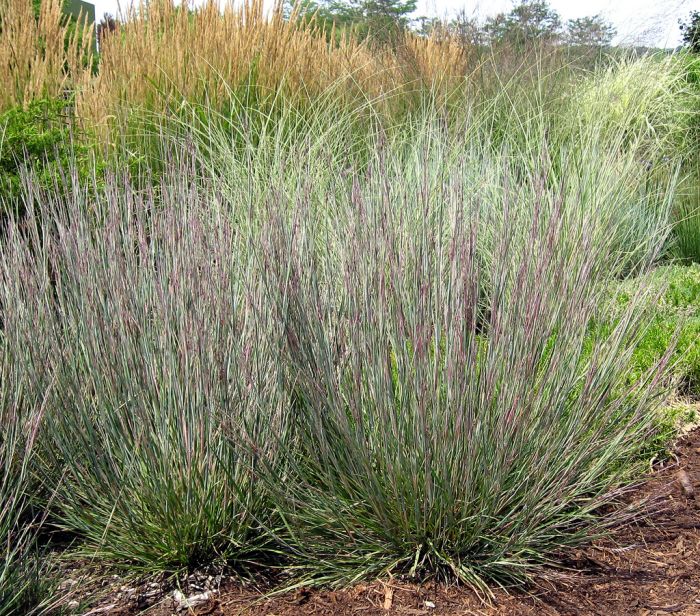Top Ten Boulevard Plants
A list to help you visualize the possibilities of boulevard plants!



Out of stock
Coming soon, still growingThis dwarf, clump forming, warm season native was chosen for its unique rounded shape and resistance to lodging; blue-green blades with a purplish-bronze bloom; a true kaleidoscope of autumn color
Discover an unparalleled selection of perennials at Gertens! With the largest variety in Minnesota, we offer endless options of colorful perennials, natives, and pollinator plants to beautify your garden year after year. From vibrant flowers to lush foliage, our perennials are perfect for adding beauty and charm to your outdoor space. Visit Gertens today and see why we're known as Minnesota's Destination Garden Center!
Plant Height: 24 inches
Flower Height: 32 inches
Spread: 18 inches
Sunlight: ![]()
Hardiness Zone: 3a
Other Names: Little Bluestem
Description:
This dwarf, clump forming, warm season native was chosen for its unique rounded shape and resistance to lodging; blue-green blades with a purplish-bronze bloom; a true kaleidoscope of autumn color
Ornamental Features
Carousel Little Bluestem is primarily grown for its highly ornamental fruit. The indian red seed heads are carried on showy plumes displayed in abundance from early fall to late winter. Its attractive grassy leaves are bluish-green in color. As an added bonus, the foliage turns a gorgeous orange in the fall. It has masses of beautiful spikes of deep purple flowers rising above the foliage in late summer, which are most effective when planted in groupings. The brick red stems are very colorful and add to the overall interest of the plant.
Landscape Attributes
Carousel Little Bluestem is an herbaceous perennial grass with an upright spreading habit of growth. It brings an extremely fine and delicate texture to the garden composition and should be used to full effect.
This is a relatively low maintenance plant, and is best cut back to the ground in late winter before active growth resumes. It has no significant negative characteristics.
Carousel Little Bluestem is recommended for the following landscape applications;
Planting & Growing
Carousel Little Bluestem will grow to be about 24 inches tall at maturity extending to 32 inches tall with the flowers, with a spread of 18 inches. It grows at a medium rate, and under ideal conditions can be expected to live for approximately 10 years.
This plant should only be grown in full sunlight. It is very adaptable to both dry and moist locations, and should do just fine under typical garden conditions. It is considered to be drought-tolerant, and thus makes an ideal choice for a low-water garden or xeriscape application. It is not particular as to soil type or pH. It is somewhat tolerant of urban pollution. This is a selection of a native North American species. It can be propagated by division; however, as a cultivated variety, be aware that it may be subject to certain restrictions or prohibitions on propagation.
| SKU | Container Size |
| G0696.5 | #1 Container (1 Gallon) |
* Not all container sizes may be available at this time. See store for details on specific container size availability.
| Common Family Name | Little Bluestem |
|---|---|
| Gerten Grown Plants | Gerten Grown Plants |
| Sun Preference | Full-Sun |
| Bloom Time | July, August |
| Mature Spread (Range) | 12" - 24" |
| Mature Height (Range) | 13" - 24" |
| USDA Hardiness Zone | 3, 4, 5, 6, 7, 8 |